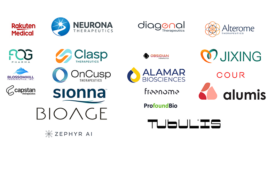
[LariBat/Adobe Stock]
In keeping the law of unintended consequences, recent provisions introduced by the 2022 Inflation Reduction Act (IRA) blunted the potential benefits of drug repurposing. As a result of limiting the window of time during which pharmaceutical companies can recoup investments before price-setting is a possibility, R&D investment is widely expected to drop, especially in follow-on drug innovation.1 But innovation takes many forms, and like most industries in recent years, drug developers are rapidly embracing recent advances in artificial intelligence (AI) to bring greater efficiency and productivity to old business models amid policy changes.
Cancer patients stand to be among the biggest winners when AI helps identify new uses for approved medicines more quickly. This is especially welcome news in an environment where failure rates in new therapeutic development remain stubbornly high—fewer than four percent of anti-cancer drug candidates that enter Phase 1 clinical trials go on to receive FDA approval.2
What success with predictive AI can look like for drug repurposing
One of the many important contributions artificial intelligence can bring to drug development is its ability to quickly and inexpensively screen many compounds and identify those with the most promising safety profiles prior to human testing. Starting with a well-defined universe of compounds for which safety hurdles have already been overcome, in silico models can help researchers predict safety effects across a broader range of variables. In our labs, pretrained AI models leverage more than 1 million endpoints from in vitro, in vivo and patient therapy response data, to identify potential opportunities for drug repurposing for further study and validation.
One approach to extending patent protection is label expansion, whereby a drug is approved for use in treating new indications. For example, Keytruda (Merck) has received more than 30 U.S. approvals, the most of any cancer treating compound. The drug was initially approved to treat melanoma in 2014, but now has indications for non-small cell lung cancer, head and neck cancer, various types of lymphoma, among several other cancer types.3 Leveraging AI to rank-order the most promising indications for a given anti-cancer compound can abbreviate the “white space” between FDA approval in a first indication and a second. With the safety profile of a commercialized drug already established, the drug’s patent holder can confidently initiate in vivo studies to validate efficacy in follow-on indications.
Another ideal application of AI is identifying synergistic cancer drug combinations. With the right inputs, in silico models can predict which compounds might be effective in overcoming the mechanisms of drug resistance commonly observed in first-line therapies. Unlike single-biomarker strategies often employed in precision medicine, multivariate machine learning algorithms can identify multiple biomarkers of interest, bringing greater accuracy to predictions of drug efficacy in well-defined patient populations.
Limitations of predictive AI
Not all AI platforms are equally predictive. Critical to the success of any AI-driven endeavor are the data inputs on which the AI model is built and trained. Data bias and quality are key factors. For example, if a dataset includes only a homogenous patient population, a small or statistically insignificant sample, or includes data from a population that is materially different from the population being studied, the predictive power of the tool may be limited. Developing predictive AI platforms requires experienced data scientists and bioinformaticians–skills many biopharmaceutical companies cannot afford. Moreover, AI-derived insights also can be difficult to interpret and apply. This has created opportunities for AI-based life sciences companies and forward-thinking contract research organizations to make these technologies more accessible.
Validating AI-derived predictions
Due to the complexity of cancer, functional testing is a requisite component of validating AI-derived hypotheses about which drugs or drug combinations might be successful in the real world. In silico predictions can be studied in a range of preclinical experiments, but pivotal, go/no-go studies generally evaluate therapeutic response in vivo. Of course, not all in vivo models are equal. Animal models with high concordance to real-life patient outcomes, such as orthotopic patient-derived xenografts (O-PDX) and humanized O-PDX models, are the gold standard for validating predictions that involve targeted and immuno-oncology therapies.4
Effective application of AI tools early in the lifecycle of a newly patented drug can be a useful way to identify new potential indications for the drug, test those hypotheses and develop drugs showing promise for new disease indications. With AI acting as an accelerant during this process, drug companies can operate more efficiently–and more importantly, deliver better outcomes for patients.
Peter Ellman is the CEO of Certis Oncology Solutions, a San Diego-based precision oncology start-up. He previously led Paradox Dx and Nextec Applications and held positions at StrataGene, Thermoscan, and Interplak. Peter studied Chemistry and Biology at the State University of New York, and he’s a Bronx High School of Science alum. A father of four, he enjoys cycling, sailing, skiing, golf, and reading about science and health. He’s also a dedicated NY Yankees fan.
References
- Goldman, Dana, et al. Mitigating the Inflation Reduction Act’s Adverse Impacts on the Prescription Drug Market. 13 April 2023. Available: https://healthpolicy.usc.edu/research/mitigating-the-inflation-reduction-acts-potential-adverse-impacts-on-the-prescription-drug-market/.
- Wang CH, Siah KW, Lo AW. Estimation of Clinical Trial Success Rates and Related Parameters. Biostat Oxf Engl. (2019) 20, 273-286.
- McKenzie, Heather. Keytruda Keeps Racking Up Approvals and Clinical Wins in 2023. BioSpace. 6 July 2023. Available: https://www.biospace.com/article/keytruda-keeps-racking-up-approvals-and-clinical-wins-in-23-/
- Goto T. Patient-Derived Tumor Xenograft Models: Toward the Establishment of Precision Cancer Medicine. J Pers Med. 2020 Jul 18;10(3):64. doi: 10.3390/jpm10030064. PMID: 32708458; PMCID: PMC7565668.
Filed Under: Drug Discovery, Drug Discovery and Development, Genomics/Proteomics, Immunology, machine learning and AI, Oncology



